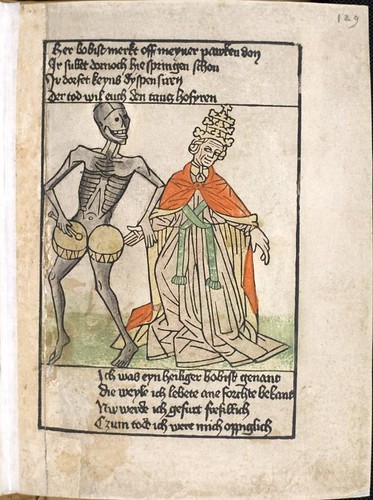

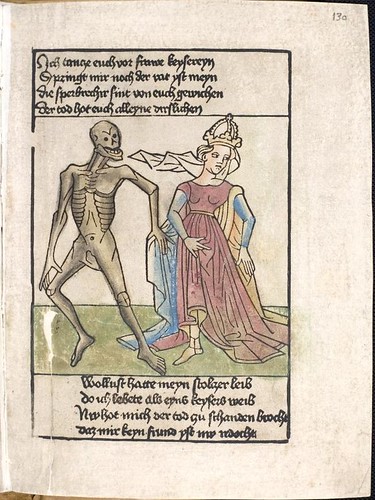


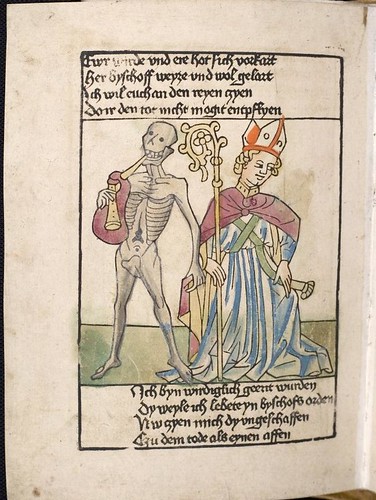
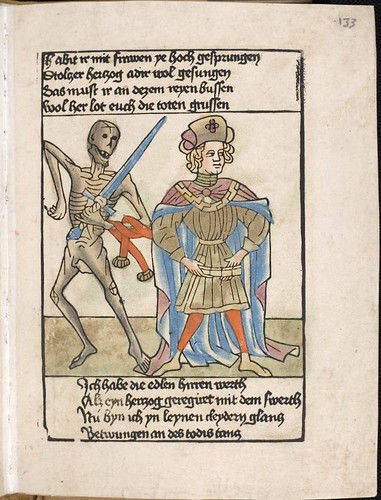
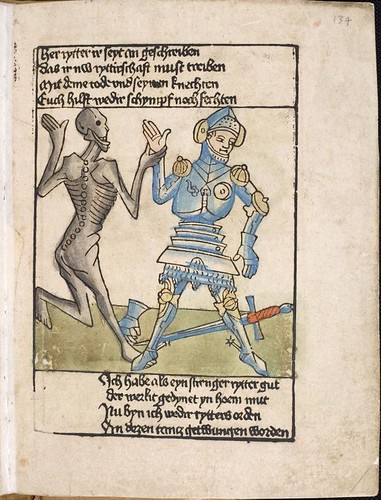




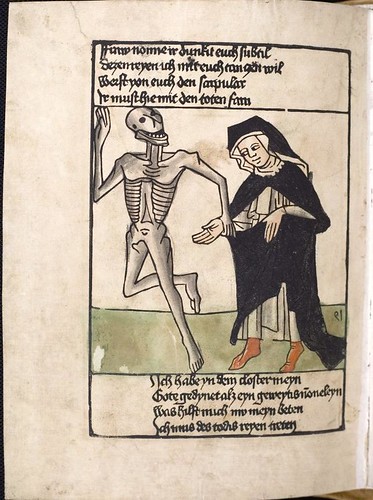
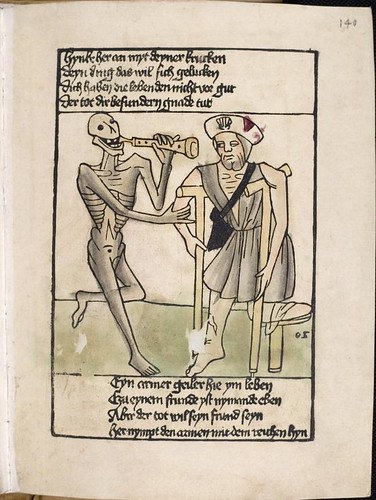
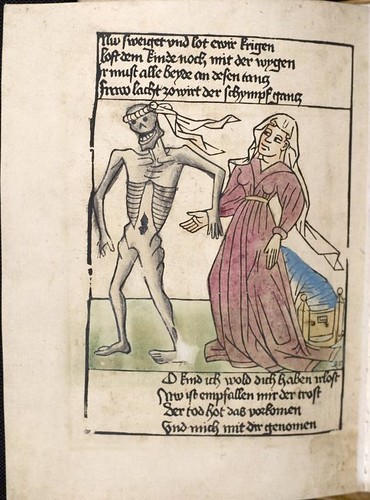

In 15th century Europe, a blockbook was a codex ('gathered volume') in which the text and illustration was printed onto a page from a single block of wood. The wood was engraved (xylography) and gouged out leaving the text and images as raised reliefs which were then inked and placed onto a double sheet of wetted paper.
Before the use of presses, the ink transfer was achieved by rubbing the verso of the paper with a round burnishing tool. The paper was printed on one side only because the rubbing would have ruined the original inked surface on the initial sheet. The pages of the blockbook were folded and assembled, with two printed pages followed by two blanks. The blanks were then glued together giving a continuous book as we know it.
In an age where both literacy and the quest for knowledge was on the increase, the blockbook system appears from this distance to have been a great advance over the earlier painstaking manuscript copying in scriptoriums. The process was cheap (but paper was expensive) and allowed for a form of mass production once the wood blocks had been engraved. As for downsides, carving both text and illustrations in a backwards form (so that when inked and rubbed they would be reversed and appear legibly) was technically demanding and more importantly, the blocks were only useful for one double-page from one book of course.
This relief printing technique had been first seen in Europe in Holland, probably as early as 1420, in playing cards and devotional religious images which had brief captions below the illustrations. The history of development from cards to books is hazy at best due to a dearth of surviving original material, but the blockbook format had its heyday between about 1450 and 1475. The works most closely associated with the technique were the Poor Man's Bible ('Biblia Pauperum'), the biblical Apocalypse story, 'Ars Moriendi' (the Art of Dying) and 'Speculum Humanae Salvationis' (the Mirror of Human Salvation).
But Gutenberg's moveable type printing appeared in 1455 and, like betmax video or the netscape navigator browser of modern times, blockbook printing was eventually made redundant by the appearance of a better technology.
The images above are the oldest known book illustrations of the danse macabre/totentanz/dance of death genre, which had begun in France earlier in the 15th century as a visual response to the effects of the plague. The blockbook of twenty six illustrations was produced between 1455 and 1458 in Germany and depicts the traditional hierarchy of victims - such as Pope, monarchy, clergy, knight, farmer, infirmed, mother and child - visited by death and accompanied by a moralising snatch of verse on the inevitability of the subject's mortality. The illustrations are hand coloured.
- The 'Totentanz Blockbuch' forms part of a codex (Codex Palatinus Germanicus: 'Cod. Pal. germ. 438') with a series of other works, owned and hosted by the University of Heidelberg. [click: "129r-142r 'Oberdeutscher vierzeiliger Totentanz' (Blockbuch)", then the '-' at the top of the page to access the thumbnail images]
- The images
will all beare also available at wikimedia (I spent a lot of time cleaning all twenty six images up - hopefully without going overboard about it). - Blockbook Apocalypse at Glasgow University Library (Book of the Month).
- Blockbooks by Sue Wood from the Art and Books website at Charles Sturt University, NSW.
- An Introduction to Blockbooks.
- History of Printing at DigiGraphics.
- History of Printmaking.
- Address by academic librarian, Reg Carr, in 2001: 'The Past, the Present and the Future of the Book', hosted by Oxford's Bodley Library.
- Block-books in 15th century Europe at wikipedia.
- Previously: Heidelberger Totentanz; The History of Infectious Disease; Death Becomes Her
Tidak ada komentar:
Posting Komentar